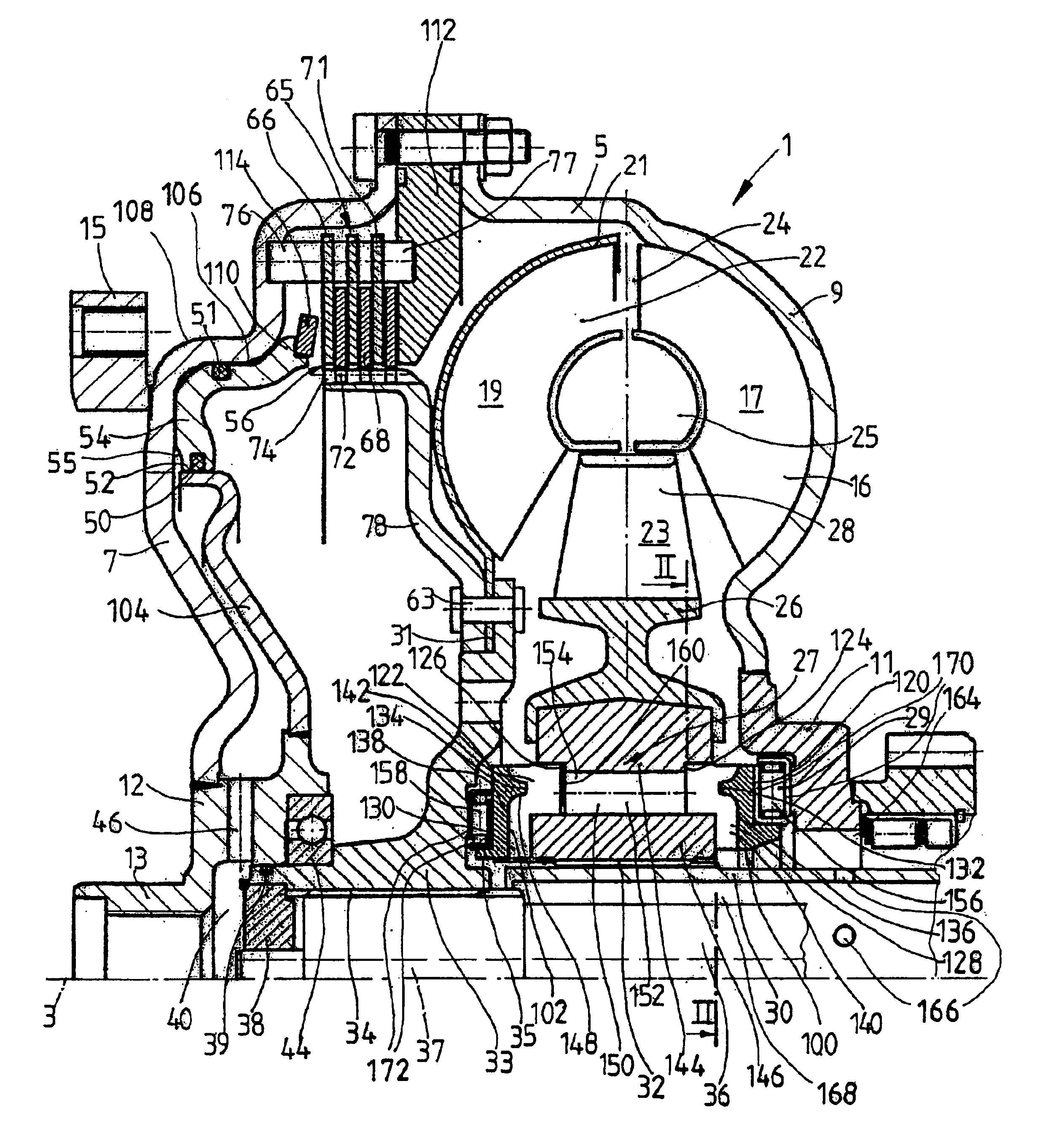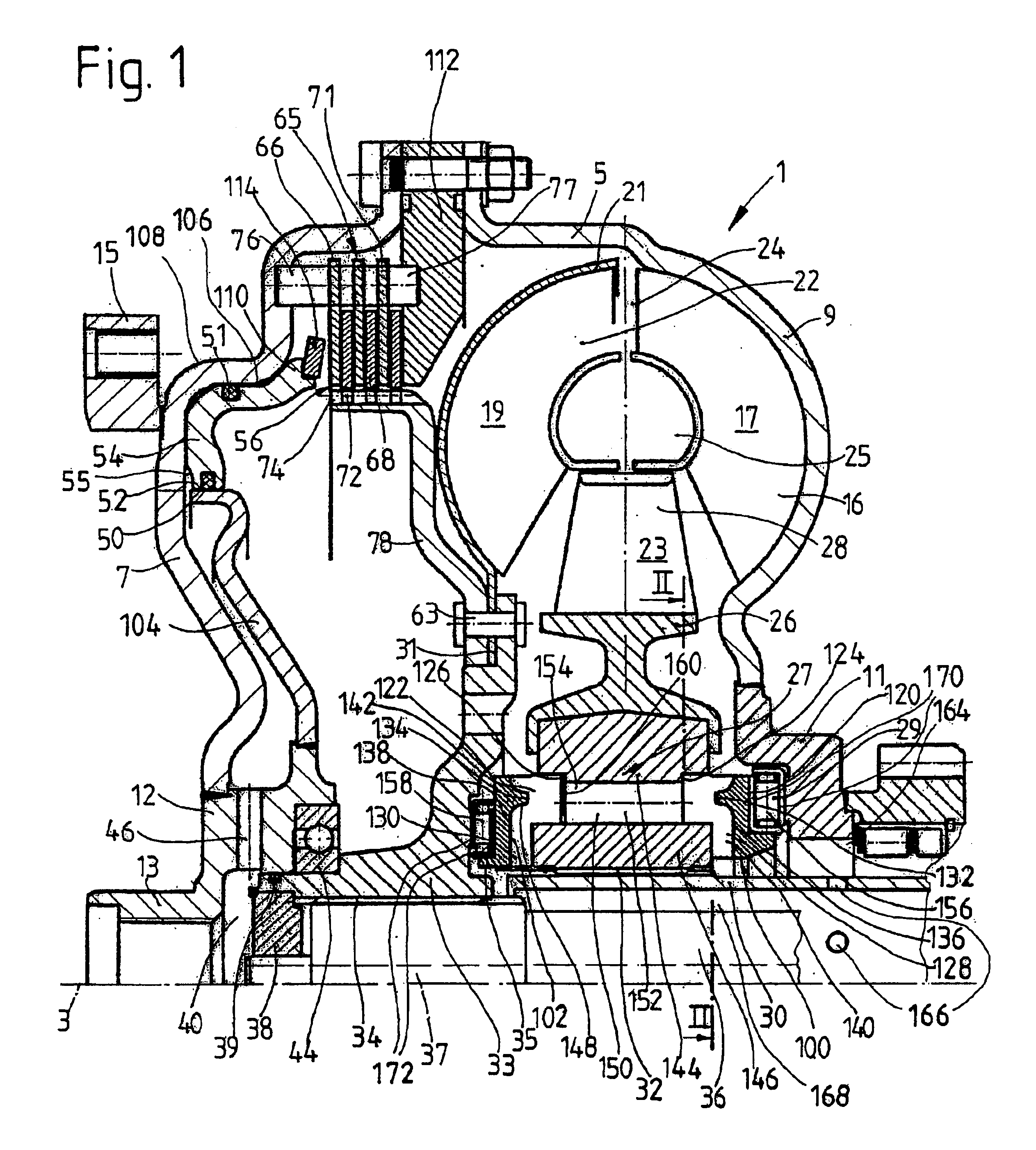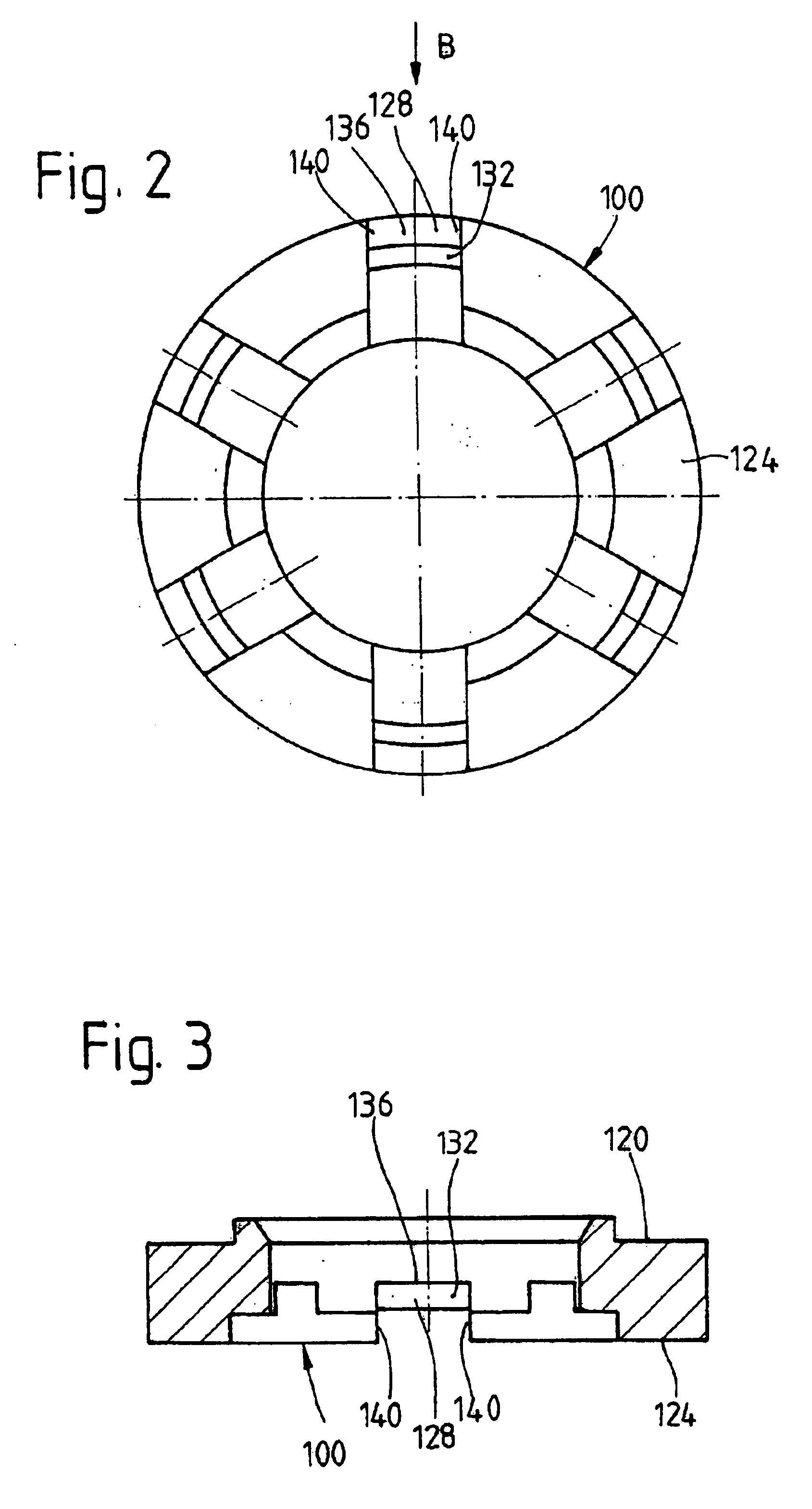Hydrodynamic torque converter with at least one axial bearing arrangement for supporting the stator
a technology of axial bearing and stator, which is applied in the direction of interengaging clutches, fluid couplings, gearing, etc., can solve the problems of reducing the distance between the viscous medium and the axial bearing arrangement, and reducing the distance between the viscous medium and the flow passag
- Summary
- Abstract
- Description
- Claims
- Application Information
AI Technical Summary
Benefits of technology
Problems solved by technology
Method used
Image
Examples
Embodiment Construction
FIG. 1 shows a hydrodynamic torque converter 1, which is able to rotate around an axis of rotation 3. The hydrodynamic torque converter 1 has a converter housing 5, which has a converter cover 7 on the side facing the drive (not shown), such as an internal combustion engine. The cover is permanently connected to a pump wheel shell 9. This shell is connected in its radially inner area to a pump wheel hub 11.
In its radially inner area, the converter cover 7 has a journal hub 12, which carries a bearing journal 13. The journal bearing 13 is mounted on an element of the drive, such as a crankshaft, in a manner known in and of itself (and therefore not shown) in order to center the converter housing 5 on the drive side. In addition, the converter cover 7 also has a mounting 15, which usually serves to attach the converter housing 5 to the drive, preferably by way of a flex plate (not shown). For a drawing of how the bearing journal of a torque converter can be mounted on a crankshaft of ...
PUM
 Login to View More
Login to View More Abstract
Description
Claims
Application Information
 Login to View More
Login to View More - R&D
- Intellectual Property
- Life Sciences
- Materials
- Tech Scout
- Unparalleled Data Quality
- Higher Quality Content
- 60% Fewer Hallucinations
Browse by: Latest US Patents, China's latest patents, Technical Efficacy Thesaurus, Application Domain, Technology Topic, Popular Technical Reports.
© 2025 PatSnap. All rights reserved.Legal|Privacy policy|Modern Slavery Act Transparency Statement|Sitemap|About US| Contact US: help@patsnap.com



